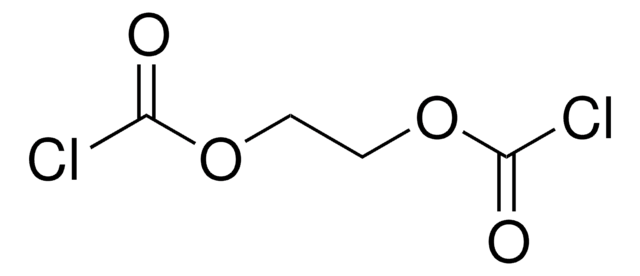731811
Poly(ethylene glycol) diglycidyl ether
average MN 2,000, cross-linking reagent amine reactive
Synonym(s):
Polyethylene glycol, Diepoxy PEG, PEG diglycidyl ether, Polyoxyethylene bis(glycidyl ether)
About This Item
Recommended Products
product name
Poly(ethylene glycol) diglycidyl ether, average Mn 2,000
form
liquid
Quality Level
mol wt
average Mn 2,000
reaction suitability
reagent type: cross-linking reagent
reactivity: amine reactive
mp
49-54 °C
polymer architecture
shape: linear
functionality: homobifunctional
storage temp.
2-8°C
InChI
1S/C8H14O4/c1(9-3-7-5-11-7)2-10-4-8-6-12-8/h7-8H,1-6H2
InChI key
AOBIOSPNXBMOAT-UHFFFAOYSA-N
Looking for similar products? Visit Product Comparison Guide
Application
- Impact of Poly(ethylene glycol) Diglycidyl Ether on PVC/PEO Blend Properties: This study examines the influence of PEGDE on the tensile properties, morphology, and electrical conductivity of PVC/PEO blends, highlighting its effectiveness as a surface modifier (Supri et al., 2016).
- Flexible Wearable Sensors Based on CNTs and PEGDGE: This research focuses on developing flexible wearable sensors by reinforcing carbon nanotubes with PEGDGE, analyzing their strain sensitivity and mechanical properties (Del Bosque et al., 2021).
- Network Polymers via Addition Reactions of Multifunctional-Amine and PEGDGE: The synthesis of network polymers through the reaction of multifunctional-amine and PEGDGE or diacrylate compounds, exploring their application in materials science (Naga et al., 2020).
- Modification of Alkali Lignin with PEGDGE for Bio-lubricant Applications: This study modifies alkali lignin with PEGDGE to enhance its use as a thickener in bio-lubricant formulations, demonstrating improved dispersion and stability (Cortés-Triviño et al., 2018).
- Characterization of Injectable Hyaluronic Acid Dermal Fillers Cross-Linked with PEGDGE: Investigates hyaluronic acid dermal fillers cross-linked with PEGDGE, focusing on their physicochemical properties and applications in aesthetic medicine (Zerbinati et al., 2021).
Storage Class
12 - Non Combustible Liquids
wgk_germany
WGK 3
Choose from one of the most recent versions:
Already Own This Product?
Find documentation for the products that you have recently purchased in the Document Library.
Customers Also Viewed
Articles
Highlighting new synthetic modifications of PEG to improve the mechanical properties and degradation of resulting hydrogels in tissue engineering applications.
Highlighting existing and novel fabrication methods for both, solid and hydrogel-based scaffold for tissue engineering applications.
Our team of scientists has experience in all areas of research including Life Science, Material Science, Chemical Synthesis, Chromatography, Analytical and many others.
Contact Technical Service










